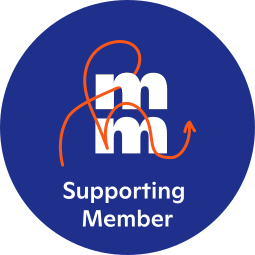6 Tips for Successful New Year’s Intentions
Here we are. The start of another New Year. For most people, this time of year represents an opportunity to reflect — to let go of anything that has not worked in the past and make positive changes for the future. Unfortunately, research shows that only 46% of those who make New Year’s resolutions report they are successful in keeping the resolutions after 6 months. I don’t know about you, but I find this number very disheartening, so this year I am resolving to shift my mindset around making New Year’s resolutions!

A good place to start is with the word itself. Google “resolution” and you will find the following definition:
res-o-lu-tion
noun
1. a firm decision to do or not do something
By this definition, to make a resolution is to limit our ability to grow by only giving ourselves two options: all or nothing, do it or do not. It is no wonder that about 50% of people end up feeling like failures by June. Now, let’s see what happens if we use the word “intention” instead of resolution:
in-ten-tion
noun
1. a thing intended, an aim or a plan
2. the healing process of a wound
Wow! It’s remarkable how many possibilities are opened up after redefining positive change in terms of intention. It becomes more about creating a pathway to success. What strikes me the most, however, is the second definition, “the healing process of a wound.” Don’t most resolutions come from the need to heal a wound? When we don’t feel good about our bodies, we resolve to lose weight. When we struggle living paycheck to paycheck, we resolve to save more. When most of us fail to meet our goals, though, we go back to feeling not good enough, not skinny enough, and not rich enough. The wound never heals. In fact, for some it may open a little deeper.
When we shift our mindset from fixing to healing, we can begin to think about meeting our goal as a process rather than an absolute set of actions. Taking the first step on this journey allows for flexibility and the need to make mistakes. At Create Outcomes, we start the healing journey by listening to our client’s intentions. This is essential in shaping our work together. We collaborate with our clients to create Landmarks, which are small, achievable steps that allow them to mark
their progress, and that let them know they are moving in the right direction.
Here are 6 tips below to set meaningful intentions for the upcoming year and ultimately, positive and lasting changes for your future.
1. Get Real
The most important part of creating a meaningful Landmark is to be as realistic as possible. This means brutal honesty — with yourself. If your intention is to lose weight, don’t make a goal such as “I will exercise everyday!” Unless you are training for the Olympics, you probably do not need to exercise this much. Set an intention for yourself that is doable, and works with your lifestyle and schedule. If you typically have a sedentary lifestyle, perhaps a good place to start is with exploring what kinds of exercise you would enjoy.
An achievable Landmark: I will explore and try various forms of exercise. (Yoga and dancing count!)
2. Details! Details! Details!
In addition to making your Landmarks realistic, it is also important that they are measurable. “I will save more” is very vague. Being specific increases the chance that you will succeed and allows you to know when you have achieved your goal.
A measurable Landmark: I will put 5% of every paycheck into a savings account for 12 months.
3. Put a positive spin on it.
It is a lot easier to do something than to not do something. For instance, if your intention is to eat healthier, it is easier to add more vegetables to every meal than to swear off chocolate for
the whole year. When you deprive yourself of something completely, it makes the thing you are trying to give up more desirable and more powerful. Instead, try replacing the negative with more positive. Here are some examples:
Negative: “I will give up sugar.”
Positive: “I will eat vegetables at every meal.”
Negative: “I will stop taking things so personally.”
Positive: “I will be kind to myself by ____.”
4. Equip Yourself!
In order to successfully achieve your Landmarks, you will need the tools to be successful. Sometimes, equipping yourself with an object is helpful, such as a new treadmill for exercise goals. It is important, however, to equip yourself with the right helpers on your journey. You don’t have to do it all alone. If you have the means to consult a nutritionist for your healthy eating goals, do it! If you have a friend who has already achieved what you hope to accomplish this year, then pick their brain about what worked for them and what their struggles were. Maybe you can learn from their mistakes, or maybe they will just provide much needed support and be there to cheer you on when things get tough.
5. To Me — Good Job!
Yes, reaching your goal is a reward in itself, but why not celebrate the little steps in between! Research tells us that acknowledging your progress along the way helps to maintain your motivation and ensure success. Think about how you would like to be acknowledged. Is it encouragement and positive words from a friend? What about treating yourself to a night out or a massage for working hard? Just be mindful that your reward doesn’t set you back in your intention, such as eating a whole cake when you are trying a healthier diet or splurging on a designer outfit when you intend to save money. Your reward should help you celebrate your progress, not make you feel guilty.
6. Track Your Progress
Write down your intentions, and throughout your journey, check in frequently to see how you are coming along. At Create Outcomes, we help our clients do this through their LifeMaps, and have found that chronicling progress is essential to achieving goals. Tracking gives you a record of how you are doing and makes it clear when you have achieved certain Landmarks. Tracking also allows you to honestly reflect on the roadblock you might encounter along the way. If you are finding that it is getting difficult to meet your Landmark, then reevaluate, and set a more achievable one. Intentions are also not just for January, but throughout the year.
Norcross, J. C., Mrykalo, M. S., & Blagys, M. D. (2002). Auld lang Syne: Success predictors, change processes, and self-reported outcomes of New Year’s resolvers and nonresolvers. Journal of Clinical Psychology, 58, 397–405. doi: https://doi.org/10.1002/jclp.1151
Dr. Jasmine Narayan, Psy.D. specializes in child and adolescent psychotherapy, specifically issues related to aggressive/impulsive behavior, emotional regulation, ADHD, depression, anxiety and trauma. She draws on positive parenting techniques, parent-child interaction therapy, mindfulness and relaxation, and evidence-based interventions to support clients in their growth.
︎
Create Outcomes is an organization devoted to supporting individuals in growing toward their highest potential. We offer individual therapy, couples therapy, group therapy, therapy for children, teen therapy and retreats. Our therapists integrate psychodynamic theory, cognitive behavioral approaches, and their own unique perspective and training to provide the most clinically relevant care to each individual. We are in-network with Humana insurance and offer in-person therapy in Denver, Colorado, New York, NY and Long Island, NY and provide teletherapy for residents of Florida.
